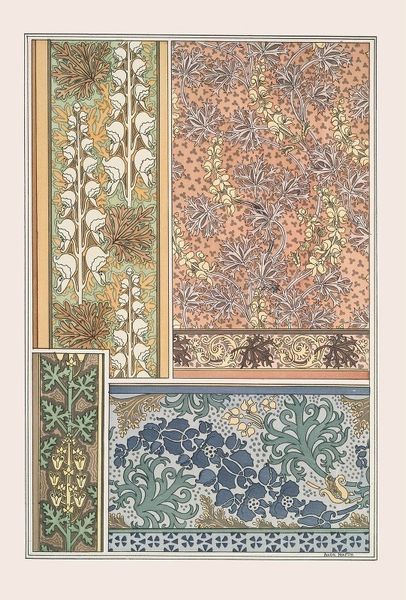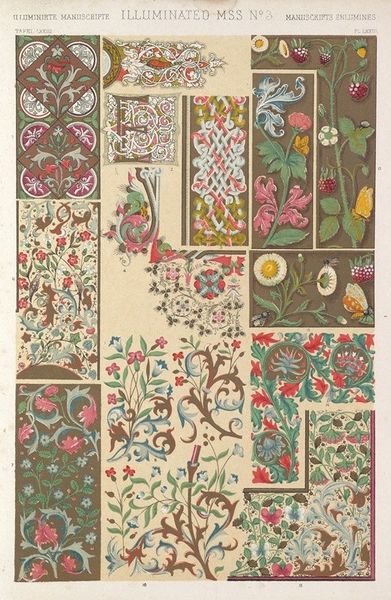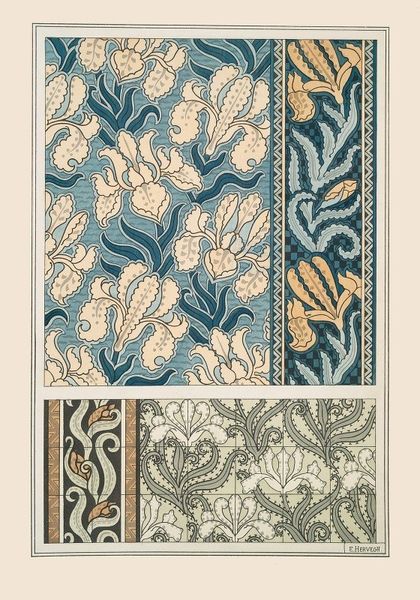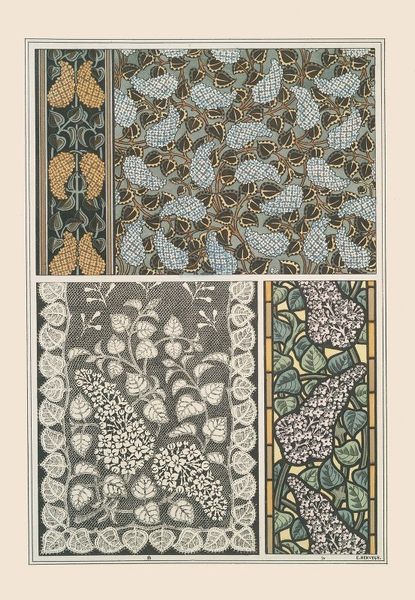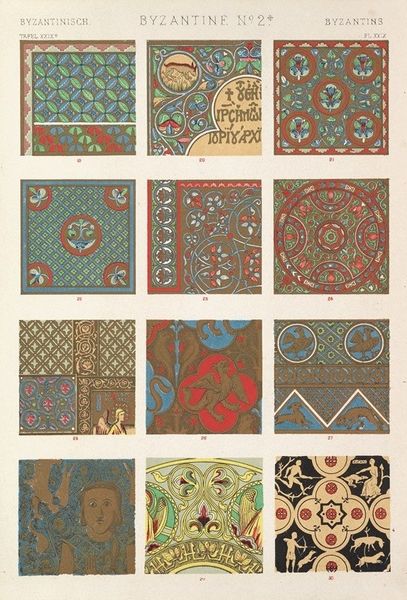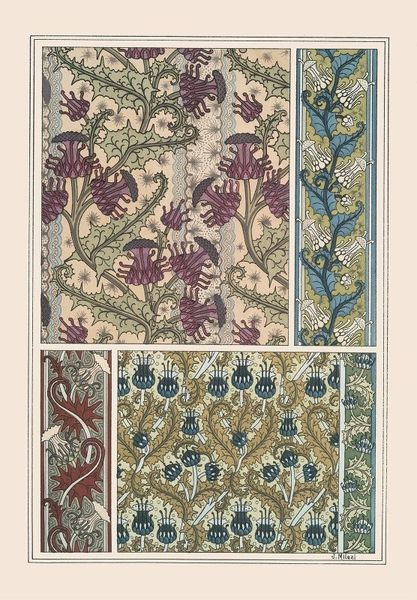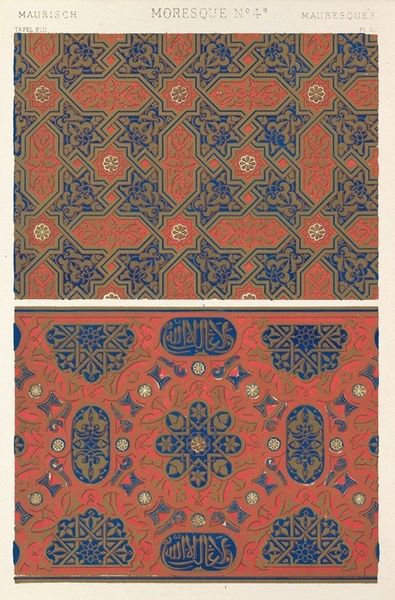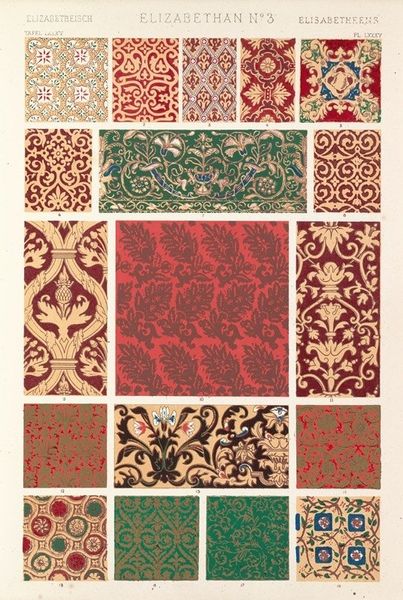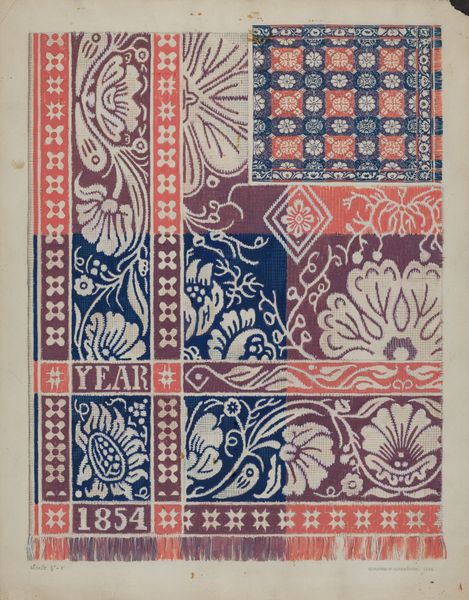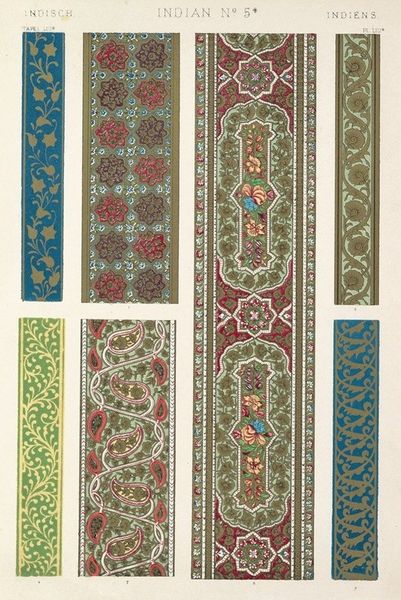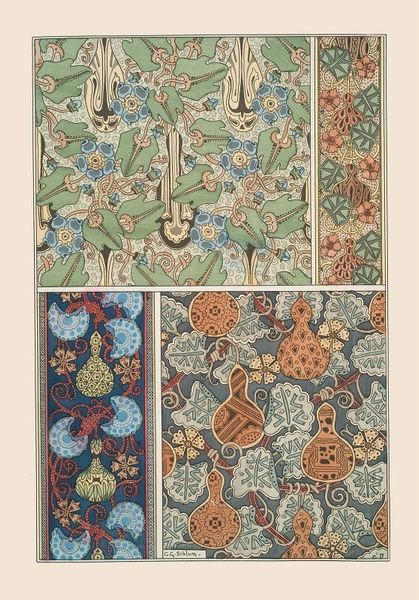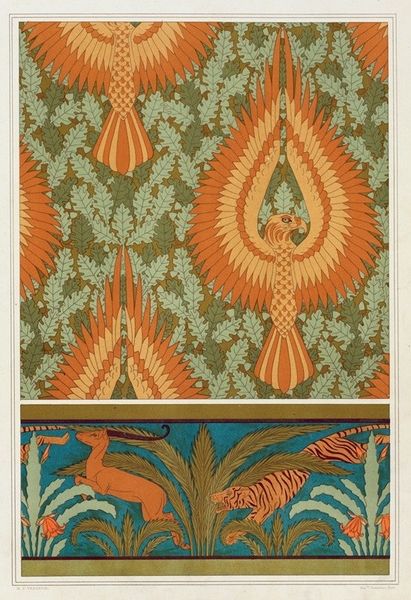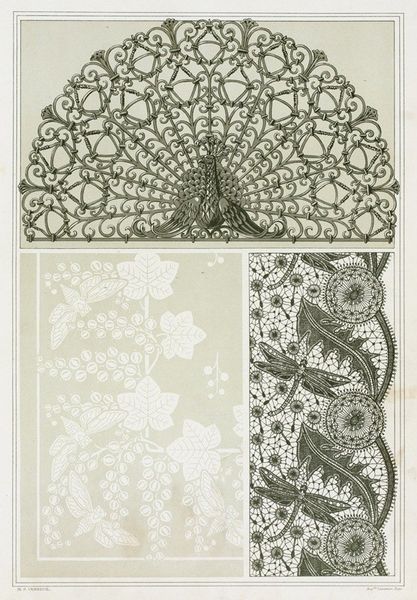
Hippocampes et algues, bordure. Les quatre éléments, carreaux céramiques, et lézards, bordure.1897 1897
0:00
0:00
#
art-nouveau
# print
#
landscape
#
collage layering style
#
figuration
#
geometric pattern
#
pattern background
#
pattern design
#
ethnic pattern
#
geometric
#
repetition of pattern
#
vertical pattern
#
pattern repetition
#
textile design
#
decorative-art
#
layered pattern
Copyright: Public Domain: Artvee
Curator: This is “Hippocampes et algues, bordure. Les quatre éléments, carreaux céramiques, et lézards, bordure” by Maurice Pillard Verneuil, created in 1897. I’m struck by its systematic structure and decorative elements. What's your take on it? Editor: At first glance, it evokes a sense of contained energy – a vibrant exploration of natural themes that's nevertheless constrained within defined borders. There’s a certain tension there, reflecting perhaps the limitations imposed on nature by societal structures. Curator: Precisely! The choice of the print medium here is very interesting, indicating a broader social context. Verneuil was not only an artist, but also a designer and decorator; printmaking offered access to a larger demographic, therefore expanding opportunities for marketing, selling, and even reproducing items for popular use. The four elements are translated into a flat design that could easily decorate wallpaper or ceramics, pointing to consumption patterns in the late 19th century. Editor: And those patterns! The rhythmic repetition of motifs – seahorses, lizards, fish – speaks to a larger historical fascination with cataloging and controlling the natural world. Look at how he juxtaposes them: Earth represented by reptiles and burrowing animals, Air with dragonflies and butterflies, Water with sea creatures and fish, it suggests an attempt to create a cohesive understanding. This approach mirrors broader colonial endeavors where indigenous knowledge systems were subsumed within a Western framework. Curator: The color palette adds to this. The shades are rather muted, yet somehow still vibrant, and suggest the industrial dyeing processes of the time. The production and application of these colors reveal the expansion of chemical industries into the sphere of art and domestic life. The work blurs the lines between "high art" and commercial application, demonstrating a period shift in our conceptions about accessibility in visual artistry. Editor: I completely agree! The geometric nature of the work – the tiling, the symmetry – also hints at the societal structures of the time, the rigid organization. It’s not just a pretty picture; it’s a reflection of the societal landscape in 1897, when rigid categorization began to yield under new ideologies about freedom and creativity. Curator: What's exciting about studying artworks such as this one is that its beauty resides in both design and function. As a cultural commodity that was available for sale on a potentially wide scale, this piece had an opportunity to really permeate public consciousness in a meaningful way, thus acting as a subtle commentary on society at large. Editor: Absolutely. Art pieces like this act as potent cultural texts, echoing the voices and anxieties of their time. It makes me consider who benefited most from the production and dissemination of these images, who was excluded, and what kinds of values they were meant to reinforce, making it even more intriguing to decode it now.
Comments
No comments
Be the first to comment and join the conversation on the ultimate creative platform.
